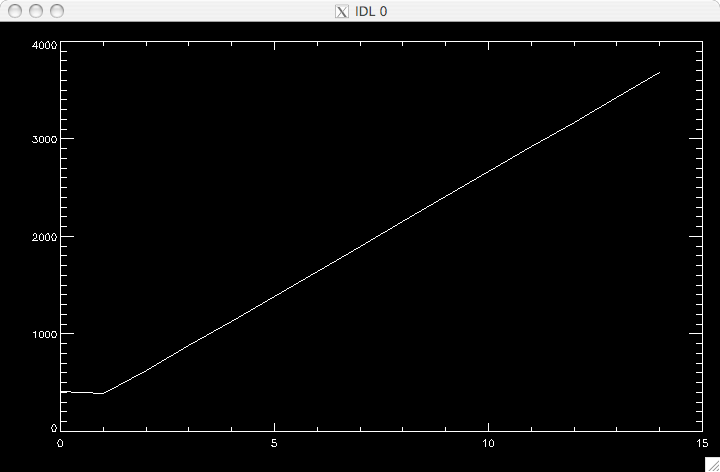EIS Post-Launch FOV (X-FOV):#
During pre-launch calibration, it was envisaged that the best linear part of the PZT (EIS fine mirror driver) was from steps 0 to 2400. Post launch calibration/operations show that the best linear part is reduced by 160 steps (corresponds to 40”).

PZT saturation plot
X = MHC HK sample number
Y = MHC movement sensor (MHC strain gauge output)
This has resulted in reducing the EIS X-FOX from 600” to 560” (EIS science requirement 360”). The planning tool was modified such that the planning tool warns the observers when trying to point a study using the first 40” of EIS X-FOV (EIS make plan tool).
It is not known what has caused the change in the PZT non-linearity within the first 40”, however no change in the PZT behaviour was detected since March 2007, i.e. since this feature was first observed. It is speculated that the loading on the mechanism may have been caused by the severe out-gassing encountered during the immediate post launch period.
